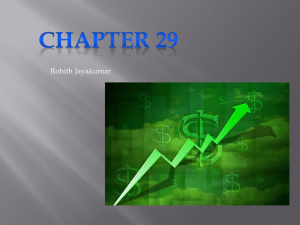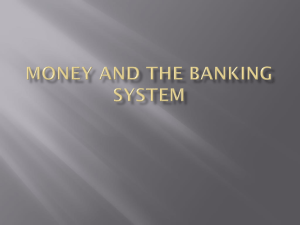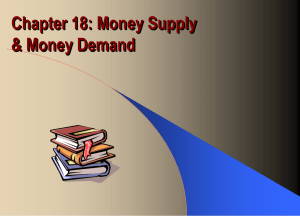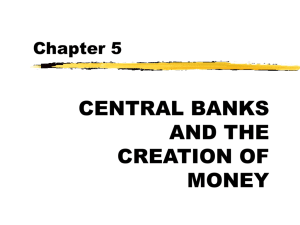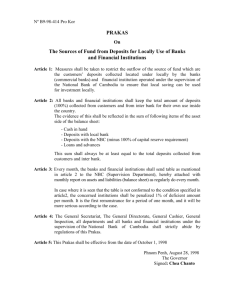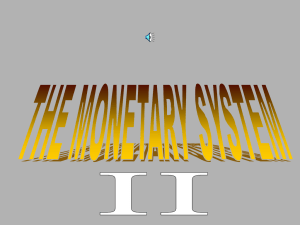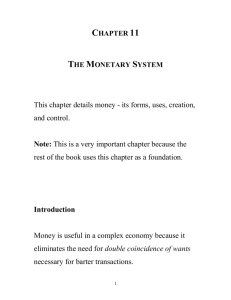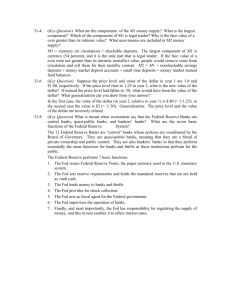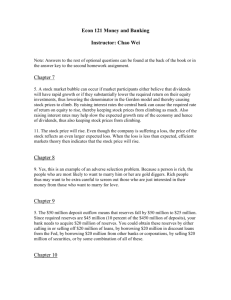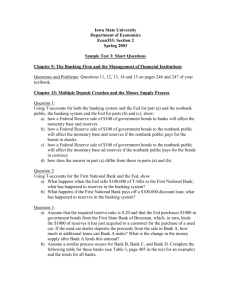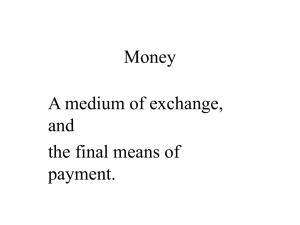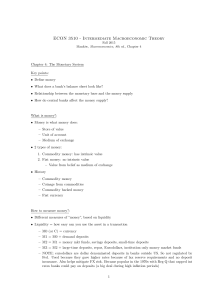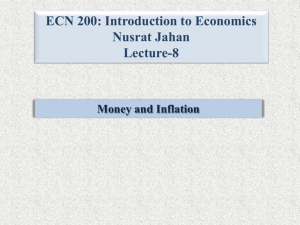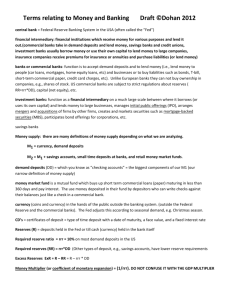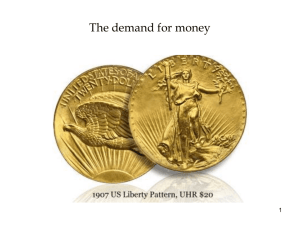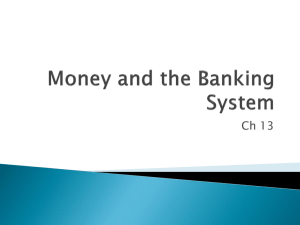Ming's Handouts Chapter 10
advertisement
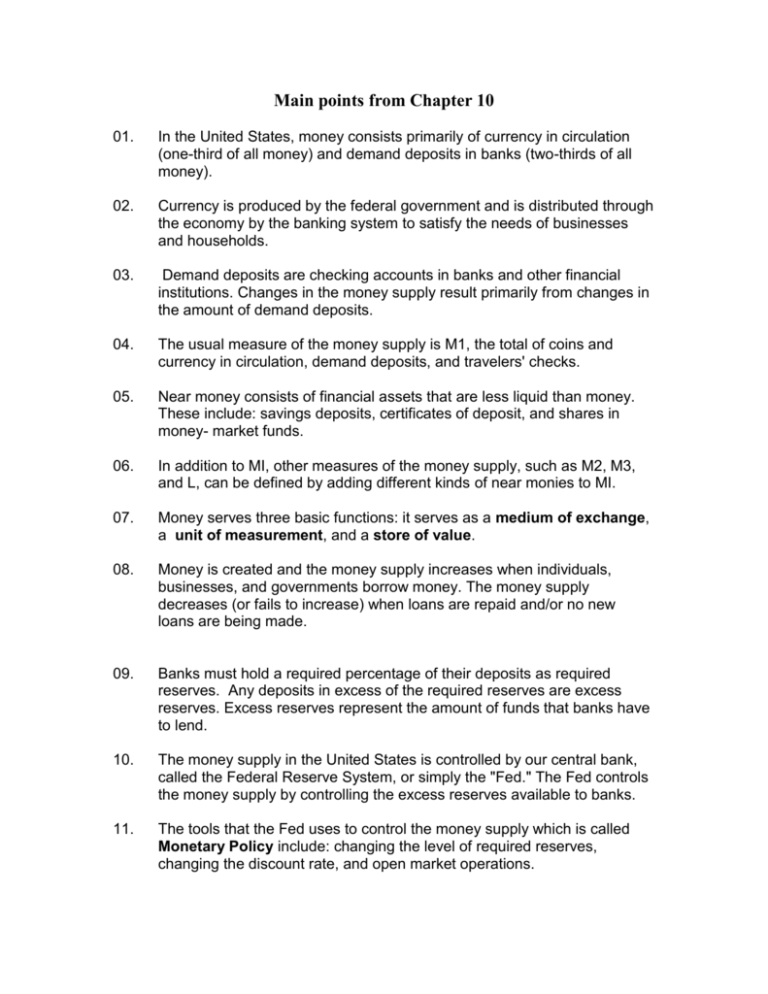
Main points from Chapter 10 01. In the United States, money consists primarily of currency in circulation (one-third of all money) and demand deposits in banks (two-thirds of all money). 02. Currency is produced by the federal government and is distributed through the economy by the banking system to satisfy the needs of businesses and households. 03. Demand deposits are checking accounts in banks and other financial institutions. Changes in the money supply result primarily from changes in the amount of demand deposits. 04. The usual measure of the money supply is M1, the total of coins and currency in circulation, demand deposits, and travelers' checks. 05. Near money consists of financial assets that are less liquid than money. These include: savings deposits, certificates of deposit, and shares in money- market funds. 06. In addition to MI, other measures of the money supply, such as M2, M3, and L, can be defined by adding different kinds of near monies to MI. 07. Money serves three basic functions: it serves as a medium of exchange, a unit of measurement, and a store of value. 08. Money is created and the money supply increases when individuals, businesses, and governments borrow money. The money supply decreases (or fails to increase) when loans are repaid and/or no new loans are being made. 09. Banks must hold a required percentage of their deposits as required reserves. Any deposits in excess of the required reserves are excess reserves. Excess reserves represent the amount of funds that banks have to lend. 10. The money supply in the United States is controlled by our central bank, called the Federal Reserve System, or simply the "Fed." The Fed controls the money supply by controlling the excess reserves available to banks. 11. The tools that the Fed uses to control the money supply which is called Monetary Policy include: changing the level of required reserves, changing the discount rate, and open market operations. 12. Required Reserve Ratio is when reserves of monies to total deposits increases, banks will have less excess reserves to loan and the money supply will be unable to increase. When the ratio decreases, banks will have more money to loan and the money supply will increase. 13. The Discount Rate is the interest rate that regular banks are charged when they borrow money from the Fed. Lower rates result in more money being borrowed by banks and re-lent to businesses and individuals. This increases the money supply. 14. Open-Market Operations refer to the Fed buying and selling existing government bonds from banks and individuals. When the Fed buys bonds it takes bonds out of the economy and replaces them with new reserves that can be loaned. When the Fed sells bonds, it takes potentially loanable funds out of the economy and replaces them with nonloanable bonds. 15. The price of money is the interest rate. The quoted interest rate, the one that people and businesses earn and pay, is called the nominal interest rate because it includes an inflation premium. The interest rate that is adjusted for inflation is called the real interest rate.

